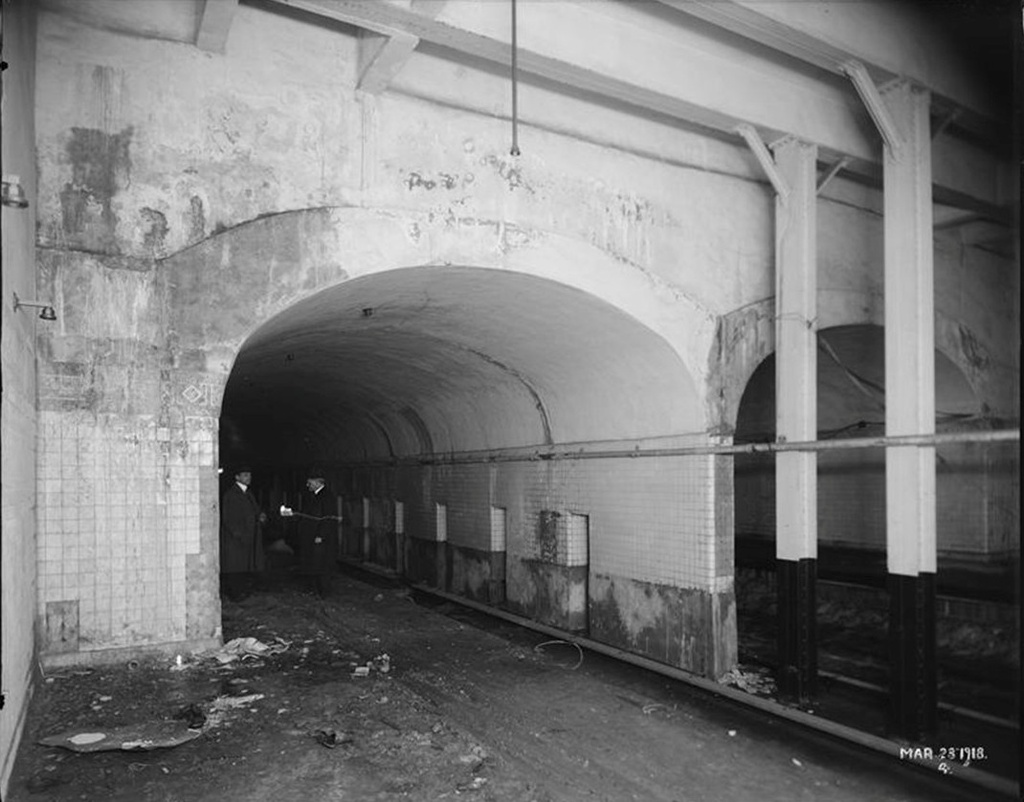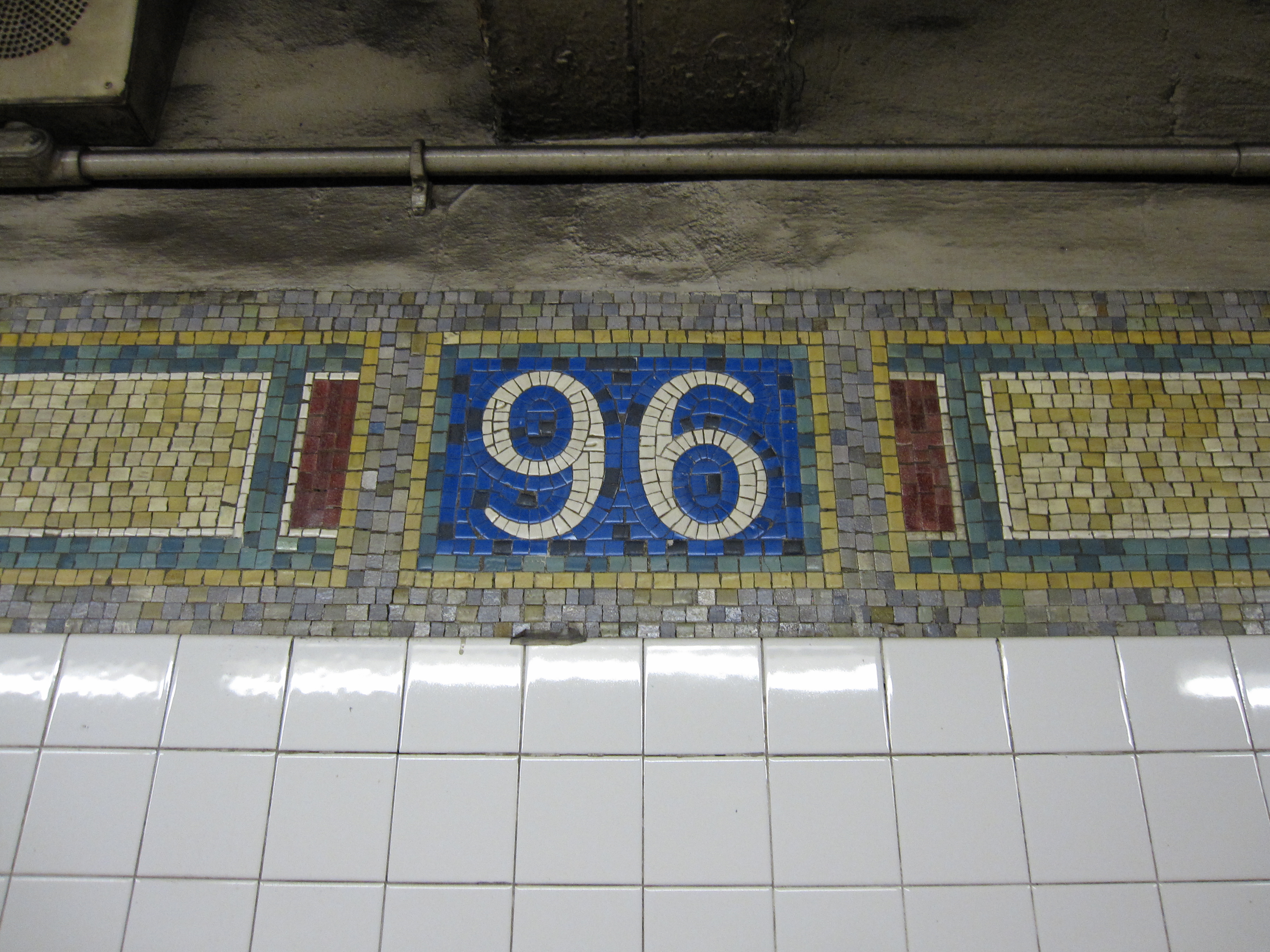96th Street (IRT Lexington Avenue Line) on:
[Wikipedia]
[Google]
[Amazon]
The 96th Street station is a local station on the

 Following the completion of the original subway, there were plans to construct a line along Manhattan's east side north of 42nd Street. The original plan for what became the extension north of 42nd Street was to continue it south through
Following the completion of the original subway, there were plans to construct a line along Manhattan's east side north of 42nd Street. The original plan for what became the extension north of 42nd Street was to continue it south through
 The station has two local tracks and two
The station has two local tracks and two
City Suite Artwork by Laura Bradley (1994)
* Station Reporter â€
* Station Reporter â€
* MTA's Arts For Transit â€
* [https://maps.google.com/?ie=UTF8&ll=40.785716,-73.950176&spn=0.003842,0.013433&z=17&layer=c&cbll=40.78585,-73.950834&panoid=wIBeU3d20oZiFvzt0CwM1Q&cbp=12,57.65,,0,6.29 96th Street entrance from Google Maps Street View]
Platforms from Google Maps Street View
{{DEFAULTSORT:96th Street (Irt Lexington Avenue Line) IRT Lexington Avenue Line stations New York City Subway stations in Manhattan New York City Subway stations located underground Railway stations in the United States opened in 1918 1918 establishments in New York City Upper East Side
IRT Lexington Avenue Line
The IRT Lexington Avenue Line (also known as the IRT East Side Line and the IRT Lexington–Fourth Avenue Line) is one of the lines of the A Division of the New York City Subway, stretching from Lower Manhattan north to 125th Street in Eas ...
of the New York City Subway
The New York City Subway is a rapid transit system owned by the government of New York City and leased to the New York City Transit Authority, an affiliate agency of the state-run Metropolitan Transportation Authority (MTA). Opened on October 2 ...
. Located at the intersection of Lexington Avenue
Lexington Avenue, often colloquially abbreviated as "Lex", is an avenue on the East Side of the borough of Manhattan in New York City that carries southbound one-way traffic from East 131st Street to Gramercy Park at East 21st Street. Along it ...
and 96th Street in the Carnegie Hill
Carnegie Hill is a neighborhood within the Upper East Side, in the borough of Manhattan in New York City. Its boundaries are 86th Street on the south, Fifth Avenue (Central Park) on the west, with a northern boundary at 98th Street that continue ...
and East Harlem
East Harlem, also known as Spanish Harlem or and historically known as Italian Harlem, is a neighborhood of Upper Manhattan, New York City, roughly encompassing the area north of the Upper East Side and bounded by 96th Street to the south, F ...
neighborhoods of Manhattan
Manhattan (), known regionally as the City, is the most densely populated and geographically smallest of the five boroughs of New York City. The borough is also coextensive with New York County, one of the original counties of the U.S. state ...
, it is served by the train at all times, the <6> train during weekdays in the peak direction, and the train during late nights.
This station was constructed as part of the Dual Contracts
The Dual Contracts, also known as the Dual Subway System, were contracts for the construction and/or rehabilitation and operation of rapid transit lines in the City of New York. The contracts were signed on March 19, 1913, by the Interborough Ra ...
by the Interborough Rapid Transit Company
The Interborough Rapid Transit Company (IRT) was the private operator of New York City's original underground subway line that opened in 1904, as well as earlier elevated railways and additional rapid transit lines in New York City. The IRT w ...
and opened in 1918. It was renovated in the 1990s.
History

Irving Place
Lexington Avenue, often colloquially abbreviated as "Lex", is an avenue on the East Side of the borough of Manhattan in New York City that carries southbound one-way traffic from East 131st Street to Gramercy Park at East 21st Street. Along its ...
and into what is now the BMT Broadway Line
The BMT Broadway Line is a rapid transit line of the B Division of the New York City Subway in Manhattan. , it is served by four services, all colored : the on the express tracks and the on the local tracks during weekdays (the N and Q train ...
at Ninth Street and Broadway
Broadway may refer to:
Theatre
* Broadway Theatre (disambiguation)
* Broadway theatre, theatrical productions in professional theatres near Broadway, Manhattan, New York City, U.S.
** Broadway (Manhattan), the street
**Broadway Theatre (53rd Stree ...
. In July 1911, the IRT had withdrawn from the talks, and the Brooklyn Rapid Transit Company
The Brooklyn Rapid Transit Company (BRT) was a public transit holding company formed in 1896 to acquire and consolidate railway lines in Brooklyn and Queens, New York City, United States. It was a prominent corporation and industry leader using ...
(BRT) was to operate on Lexington Avenue. The IRT submitted an offer for what became its portion of the Dual Contracts
The Dual Contracts, also known as the Dual Subway System, were contracts for the construction and/or rehabilitation and operation of rapid transit lines in the City of New York. The contracts were signed on March 19, 1913, by the Interborough Ra ...
on February 27, 1912.
In 1913, as part of the Dual Contracts
The Dual Contracts, also known as the Dual Subway System, were contracts for the construction and/or rehabilitation and operation of rapid transit lines in the City of New York. The contracts were signed on March 19, 1913, by the Interborough Ra ...
, which were signed on March 19, 1913, the Public Service Commission planned to split the original Interborough Rapid Transit Company
The Interborough Rapid Transit Company (IRT) was the private operator of New York City's original underground subway line that opened in 1904, as well as earlier elevated railways and additional rapid transit lines in New York City. The IRT w ...
(IRT) system from looking like a "Z" system (as seen on a map) to an "H"-shaped system. The original system would be split into three segments: two north–south lines, carrying through trains over the Lexington Avenue and Broadway–Seventh Avenue Lines, and a west–east shuttle under 42nd Street. This would form a roughly "H"-shaped system. It was predicted that the subway extension would lead to the growth of the Upper East Side
The Upper East Side, sometimes abbreviated UES, is a neighborhood in the borough of Manhattan in New York City, bounded by 96th Street to the north, the East River to the east, 59th Street to the south, and Central Park/Fifth Avenue to the wes ...
and the Bronx
The Bronx () is a borough of New York City, coextensive with Bronx County, in the state of New York. It is south of Westchester County; north and east of the New York City borough of Manhattan, across the Harlem River; and north of the New Y ...
.
96th Street station opened on July 17, 1918, with service initially running between Grand Central–42nd Street station
The Grand Central–42nd Street station (also signed as 42nd Street–Grand Central) is a major station complex of the New York City Subway. Located in Midtown Manhattan at 42nd Street between Madison and Lexington Avenues, it serves trains on ...
and 167th Street via the line's local tracks. On August 1, the "H system" was put into place, with through service beginning on the new east and west side trunk lines, and the institution of the 42nd Street Shuttle along the old connection between the sides. The cost of the extension from Grand Central was $58 million.
The city government took over the IRT's operations on June 12, 1940. The station was renovated in the 1990s, and had its original tilework restored.
Station layout
side platform
A side platform (also known as a marginal platform or a single-face platform) is a platform positioned to the side of one or more railway tracks or guideways at a railway station, tram stop, or transitway. A station having dual side platforms ...
s. The 6 stops here at all times, and the 4 stops here during late nights. The express tracks run on a lower level and are not visible from the platforms.
A crossover is provided, with a mosaic in the mezzanine entitled ''City Suite'', commissioned in 1994. There are new "96th Street" mosaics, and a window in the mezzanine
A mezzanine (; or in Italian language, Italian, a ''mezzanino'') is an intermediate floor in a building which is partly open to the double-height ceilinged floor below, or which does not extend over the whole floorspace of the building, a loft ...
overlooks the tracks, giving a view of oncoming trains from the south. The south end of the station features a rounded ceiling due to problems encountered during construction. Both platforms have emergency exits from the lower level express tracks.
Exits
The station has staircases leading to all four corners of the intersection of Lexington Avenue and 96th Street.References
External links
* * nycsubway.org â€City Suite Artwork by Laura Bradley (1994)
* Station Reporter â€
* Station Reporter â€
* MTA's Arts For Transit â€
* [https://maps.google.com/?ie=UTF8&ll=40.785716,-73.950176&spn=0.003842,0.013433&z=17&layer=c&cbll=40.78585,-73.950834&panoid=wIBeU3d20oZiFvzt0CwM1Q&cbp=12,57.65,,0,6.29 96th Street entrance from Google Maps Street View]
Platforms from Google Maps Street View
{{DEFAULTSORT:96th Street (Irt Lexington Avenue Line) IRT Lexington Avenue Line stations New York City Subway stations in Manhattan New York City Subway stations located underground Railway stations in the United States opened in 1918 1918 establishments in New York City Upper East Side